基于STM32L486JG主控芯片和ESP8266模块的智能温控器解决方案
 466
466
 拍明
拍明
概述
温控器是楼宇中央空调的控制面板,是比较常见的面板。传统面板不带通讯模块,及时有也是RS485,用来统一控制,没有实质和用户打交道。
这款智能温控器是在传统温控器基础之上增加了WIFI模块,用户通过APP或微信控制更加人性化,更加简单。
应该场景
1、夏天天气温度比较高,早上到办公室打开办公室空调,室内温度需要很长时间才能降下来。用户可以通过智能温控器把中央空调提前打开。
2、有时候下班时忘记关闭空调,可以通过手机软件关闭,或者在温控器设置定时关闭。
3、办公室、厂房空间比较大,温控器采样温度与出口温度不一致,用户可以通过手机软件设定温度和风速进行微调。
4、为了防止有人故意把空调温度设置过低或者过高,可以通过手机APP将面板进行锁定。
5、结合机智云平台数据分析,物业利用温控器的开通时间进行合理收费,不需要根据办公面积收费。
系统组成
智能温控器由设备端、手机APP、云平台
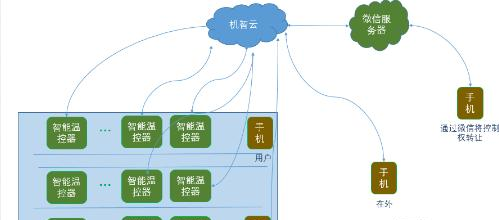
产品功能
智能温控器通过WIFI连接到机智云服务器,用户可以通过APP来设置和控制中央空调。
用户可以远程开启和关闭办公室空调。
管理员可以查看大楼空调运行情况,可以根据开启时间收费。
可以和楼宇BA控制系统对接,提升大楼智能化水平。
可以通过微信将设备控制权分享给同事。
设备结构图
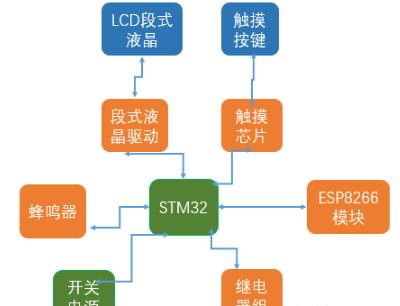
智能温控器APP设计
环境搭建
官方提供APP源码是基于Eclipse版本,发现ANDROID Studio 2非常强大,谷歌的确很厉害,就想法设法把源码导入到AS2里,最后发现开发APP还是很方便的。借助机智云的帮助文档,请教了同事,自己再捣鼓,期间遇到了不少问题,最后解决了。
程序结构
用户只对界面编写和提供APP必要信息,一个简单APP就完成了。
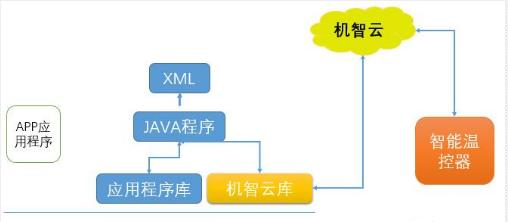
调试
可以利用机智云的虚拟设备进行调试APP,这个是非常方便的。硬件没有问题了,再进行联调,这样好确定问题点在哪儿。

界面

云平台数据点定义
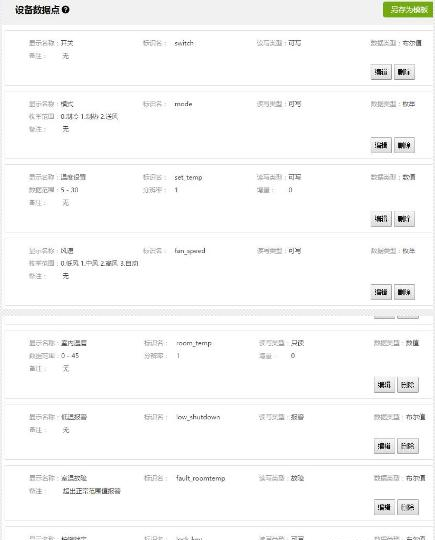
STM32L486JG
The STM32L486xx devices are the ultra-low-power microcontrollers based on the high-performance ARM® Cortex®-M4 32-bit RISC core operating at a frequency of up to 80 MHz. The Cortex-M4 core features a Floating point unit (FPU) single precision which supports all ARM single-precision data-processing instructions and data types. It also implements a full set of DSP instructions and a memory protection unit (MPU) which enhances application security.
The STM32L486xx devices embed high-speed memories (1 Mbyte of Flash memory, 128 Kbyte of SRAM), a flexible external memory controller (FSMC) for static memories (for devices with packages of 100 pins and more), a Quad SPI flash memories interface (available on all packages) and an extensive range of enhanced I/Os and peripherals connected to two APB buses, two AHB buses and a 32-bit multi-AHB bus matrix.
The STM32L486xx devices embed several protection mechanisms for embedded Flash memory and SRAM: readout protection, write protection, proprietary code readout protection and Firewall.
The devices offer up to three fast 12-bit ADCs (5 Msps), two comparators, two operational amplifiers, two DAC channels, an internal voltage reference buffer, a low-power RTC, two general-purpose 32-bit timer, two 16-bit PWM timers dedicated to motor control, seven general-purpose 16-bit timers, and two 16-bit low-power timers. The devices support four digital filters for external sigma delta modulators (DFSDM).
In addition, up to 24 capacitive sensing channels are available. The devices also embed an integrated LCD driver 8x40 or 4x44, with internal step-up converter.
They also feature standard and advanced communication interfaces.
The STM32L486xx devices embed AES hardware accelerator.
The STM32L486xx operates in the -40 to +85 °C (+105 °C junction), -40 to +105 °C (+125 °C junction) and -40 to +125 °C (+130 °C junction) temperature ranges from a 1.71 to 3.6 V VDD power supply when using internal LDO regulator and a 1.05 to 1.32V VDD12 power supply when using external SMPS supply. A comprehensive set of power-saving modes allows the design of low-power applications.
Some independent power supplies are supported: analog independent supply input for ADC, DAC, OPAMPs and comparators, 3.3 V dedicated supply input for USB and up to 14 I/Os can be supplied independently down to 1.08V. A VBAT input allows to backup the RTC and backup registers. Dedicated VDD12 power supplies can be used to bypass the internal LDO regulator when connected to an external SMPS.
The STM32L486xx family offers five packages from 64-pin to 144-pin packages.
Key Features
Ultra-low-power with FlexPowerControl
1.71 V to 3.6 V power supply
-40 °C to 85/105/125 °C temperature range
300 nA in VBAT mode: supply for RTC and 32x32-bit backup registers
30 nA Shutdown mode (5 wakeup pins)
120 nA Standby mode (5 wakeup pins)
420 nA Standby mode with RTC
1.1 μA Stop 2 mode, 1.4 μA with RTC
100 μA/MHz run mode (LDO Mode)
39 μA/MHz run mode (@3.3 V SMPS Mode)
Batch acquisition mode (BAM)
4 μs wakeup from Stop mode
Brown out reset (BOR)
Interconnect matrix
Core: ARM® 32-bit Cortex®-M4 CPU with FPU, Adaptive real-time accelerator (ART Accelerator™) allowing 0-wait-state execution from Flash memory, frequency up to 80 MHz, MPU, 100DMIPS and DSP instructions
Performance benchmark
1.25 DMIPS/MHz (Drystone 2.1)
273.55 CoreMark® (3.42 CoreMark/MHz @ 80 MHz)
Energy benchmark
220 ULPBENCH® score
Clock Sources
4 to 48 MHz crystal oscillator
32 kHz crystal oscillator for RTC (LSE)
Internal 16 MHz factory-trimmed RC (±1%)
Internal low-power 32 kHz RC (±5%)
Internal multispeed 100 kHz to 48 MHz oscillator, auto-trimmed by LSE (better than ±0.25 % accuracy)
3 PLLs for system clock, USB, audio, ADC
Up to 114 fast I/Os, most 5 V-tolerant, up to 14 I/Os with independent supply down to 1.08 V
RTC with HW calendar, alarms and calibration
LCD 8× 40 or 4× 44 with step-up converter
Up to 24 capacitive sensing channels: support touchkey, linear and rotary touch sensors
16x timers: 2x 16-bit advanced motor-control, 2x 32-bit and 5x 16-bit general purpose, 2x 16-bit basic, 2x low-power 16-bit timers (available in Stop mode), 2x watchdogs, SysTick timer
Memories
1 MB Flash, 2 banks read-while-write, proprietary code readout protection
128 KB of SRAM including 32 KB with hardware parity check
External memory interface for static memories supporting SRAM, PSRAM, NOR and NAND memories
Quad SPI memory interface
4x digital filters for sigma delta modulator
Rich analog peripherals (independent supply)
3× 12-bit ADC 5 Msps, up to 16-bit with hardware oversampling, 200 μA/Msps
2x 12-bit DAC, low-power sample and hold
2x operational amplifiers with built-in PGA
2x ultra-low-power comparators
AES: 128/256-bit key encryption hardware accelerator
20x communication interfaces
USB OTG 2.0 full-speed, LPM and BCD
2x SAIs (serial audio interface)
3x I2C FM+(1 Mbit/s), SMBus/PMBus
5x USARTs (ISO 7816, LIN, IrDA, modem)
1x LPUART (Stop 2 wake-up)
3x SPIs (4x SPIs with the Quad SPI)
CAN (2.0B Active) and SDMMC interface
SWPMI single wire protocol master I/F
IRTIM (Infrared interface)
14-channel DMA controller
True random number generator
CRC calculation unit, 96-bit unique ID
Development support: serial wire debug (SWD), JTAG, Embedded Trace Macrocell™
电路原理图
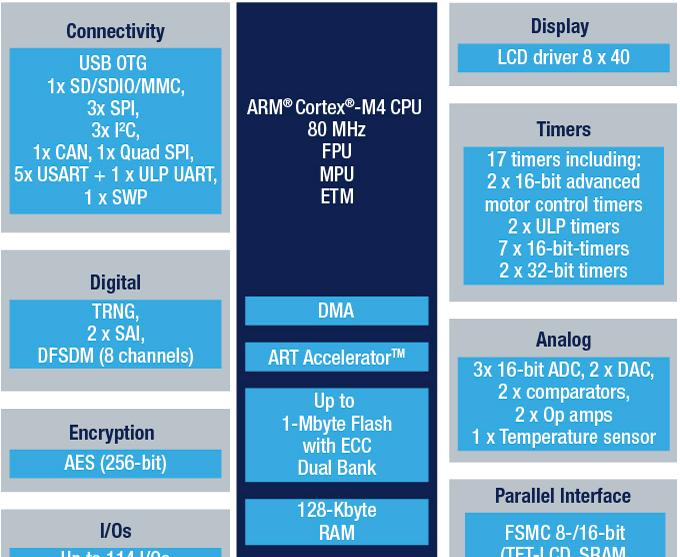
ESP8266
低功耗、高集成度的 Wi-Fi 芯片
仅需 7 个外围元器件
超宽工作温度范围:-40°C 至 +125°C
ESP8285 - ESP8266 内封 8 Mbit Flash
ESP8266
低功耗、高集成度的 Wi-Fi 芯片
仅需 7 个外围元器件
超宽工作温度范围:-40°C 至 +125°C
ESP8285 - ESP8266 内封 8 Mbit Flash
32 位 Tensilica 处理器
ESP8266EX 内置超低功耗 Tensilica L106 32 位 RISC 处理器,CPU 时钟速度最高可达 160 MHz,支持实时操作系统 (RTOS) 和 Wi-Fi 协议栈,可将高达 80% 的处理能力留给应用编程和开发。
低功耗
ESP8266EX 专为移动设备、可穿戴电子产品和物联网应用而设计,通过多项专有技术实现了超低功耗。ESP8266EX 具有的省电模式适用于各种低功耗应用场景。
高度集成
ESP8266EX 集成了 32 位 Tensilica 处理器、标准数字外设接口、天线开关、射频 balun、功率放大器、低噪放大器、过滤器和电源管理模块等,仅需很少的外围电路,可将所占 PCB 空间降到最低。
性能稳定
ESP8266EX 的工作温度范围大,且能够保持稳定的性能,能适应各种操作环境。
模组乐鑫的模组产品集成了自主研发的系统级芯片,因此具备强大的 Wi-Fi 和蓝牙功能,以及出色的射频性能。
双核 Wi-Fi & BT/BLE 模组
特性
两个可以单独控制的 CPU 内核,时钟频率可调,范围从 80 MHz 到 240 MHz
+19.5 dBm 天线端输出功率,确保良好的覆盖范围
传统蓝牙支持 L2CAP,SDP,GAP,SMP,AVDTP,AVCTP,A2DP (SNK) 和 AVRCP (CT) 协议
低功耗蓝牙 (BLE) 支持 L2CAP, GAP, GATT, SMP, 和 GATT 之上的 BluFi, SPP-like 协议等
低功耗蓝牙连接智能手机,发送低功耗信标,方便检测
睡眠电流小于 5 μA,适用于电池供电的可穿戴电子设备
集成 4 MB flash
外设包括电容式触摸传感器,霍尔传感器,低噪声放大器,SD 卡接口,以太网,高速 SPI,UART,I2S 和 I2C
通过 RF 认证以及软件协议认证
责任编辑:Davia
【免责声明】
1、本文内容、数据、图表等来源于网络引用或其他公开资料,版权归属原作者、原发表出处。若版权所有方对本文的引用持有异议,请联系拍明芯城(marketing@iczoom.com),本方将及时处理。
2、本文的引用仅供读者交流学习使用,不涉及商业目的。
3、本文内容仅代表作者观点,拍明芯城不对内容的准确性、可靠性或完整性提供明示或暗示的保证。读者阅读本文后做出的决定或行为,是基于自主意愿和独立判断做出的,请读者明确相关结果。
4、如需转载本方拥有版权的文章,请联系拍明芯城(marketing@iczoom.com)注明“转载原因”。未经允许私自转载拍明芯城将保留追究其法律责任的权利。
拍明芯城拥有对此声明的最终解释权。




 产品分类
产品分类















 2012- 2022 拍明芯城ICZOOM.com 版权所有 客服热线:400-693-8369 (9:00-18:00)
2012- 2022 拍明芯城ICZOOM.com 版权所有 客服热线:400-693-8369 (9:00-18:00)


